ASRock DeskMini H470 Review: A No-Frills LGA 1200 mini-PC Platform
by Ganesh T S on December 29, 2020 8:00 AM ESTBIOS Options and Platform Analysis
ASRock provides a graphical UEFI interface for the DeskMini H470. There are multiple options to tweak the performance of the system for the end-user's requirements. By default, the BIOS interface comes up in the 'Easy Mode'.
This mode provides quick access to commonly used functions - altering DRAM timings with XMP profiles (if the SODIMMs support it), updating the BIOS (either from an attached FAT16/32 USB driver, or directly from the Internet), modifying fan curves (duty cycle of the CPU fan for different CPU temperatures) quickly, changing boot priorities, and modifying the SATA controller mode (AHCI or RAID). Note from the previous section that the board has two SATA ports on the underside, and the drives attached to these ports can be operated in chipset RAID mode to present a single logical volume to the OS. Fan status, temperatures, voltage, and date information are also available in a functional layout.
The Kingston SODIMM kit used in the build supports a XMP 2.0 profile to operate with 'better than JEDEC-mandated' timings.at 2933 MHz. By default, the Auto setting falls back to JEDEC timings of 19-21-21-39. With a simple click on XMP 2.0, the system is able to configure itself for operating the SODIMMs with a 17-19-19-39 timing.

AIDA64 Memory Benchmarks : Default BIOS Settings (L), XMP 2.0 Profile Activated (R)
This can lead to a noticeable increase in memory throughput due to reduced latency as shown in the AIDA64 memory benchmark numbers above - whether this can lead to better performance for different use-cases is an exercise left out for another review. In this article, we only look at the performance of the system with the BIOS in its default settings.
The gallery above shows the various options available in the advanced mode. The base frequency boost option allows the board to plug in a higher than default TDP level. With the Core i7-10700 65W TDP model installed, the options available included values up to 90W - this is something we would have evaluated more thoroughly if we were to be considering this as a motherboard review.
The other options in the OC Tweaker section allow fine-grained control over various CPU operating optimizations, DRAM timing parameters, and voltages. The BIOS also allows specification of the rating of the attached adapter - 65W adapters are good enough for 35W TDP processors, and 120W ones are recommended for the 65W CPU we tested with. Usage of 180W adapters allows the board to sustain higher TDP levels for the processors during workloads.
The BIOS also allows configuration of advanced settings for the CPU such as C-state support, SGX, etc. Chipset and storage device operating parameters (both SATA and NVMe) can also be controlled. USB ports can be selectively turned off. The BIOS also includes tools for setting up RAID, secure erasing SSDs, sanitizing NVMe drives, and updating the UEFI version with a single-click. ASRock's online BIOS update approach is quite helpful, particularly when considering that other manufacturers sometimes force the creation of a bootable DOS disk with the firmware file in it for update purposes.
The hardware monitoring section in the BIOS provides a view of the temperatures of various board components along with the fan speed. Tuning of the fan is also supported - different duty cycles can be configured for different temperatures. The 'FAN-tastic Tuning' approach allows this to be configured with a graphical view.
The UEFI firmware also allows BIOS passwords to be set for added security, configuration of secure boot, and setting up the security for attached drives. Various boot options can also be set (such as enabling network booting, boot order priorities, fast boot enabling, etc.). The UEFI shell can also be accessed, and one-time overriding of the boot device is also possible.
I/O Analysis
The DeskMini H470 BIOS provides plenty of tweaks for motherboard enthusiasts - however, in terms of I/O capabilities, ASRock has adopted a conservative approach.
All the USB ports are off a single root hub in the PCH. The ones on the front operate at USB 3.2 Gen 2 (10 Gbps) speeds, while the ones on the rear are at USB 3.2 Gen 1 (5 Gbps) speeds. The USB-C port on the rear also has a DisplayPort signal muxed into it. The I219-V network controller is also off the PCH, as is the PCIe 3.0 x4 lanes set used to hook up the M.2 NVMe slot. In fact, everything here is bottlenecked by the DMI link to the processor which has PCIe 3.0 x4 lanes worth of bandwidth. The DeskMini H470 is too small to take advantage of the PCIe 3.0 x16 lanes directly from the CPU, but it does seem to be ready for four PCIe 4.0 lanes directly attached to the upcoming Rocket Lake processors.M/p>
Benchmarks and Performance
In the remainder of this review, we will first look at BAPCo's SYSmark 25, followed by various UL benchmarks and miscellaneous workloads. We also present some storage performance numbers. A detailed look at the HTPC credentials of the system is followed by testing of the power consumption and thermal solution.
| Comparative PC Configurations | ||
| Aspect | ASRock DeskMini H470 | |
| CPU | Intel Core i7-10700 | Intel Core i7-10700 |
| GPU | Intel UHD Graphics 630 | Intel UHD Graphics 630 |
| RAM | Kingston HyperX HX432S20IUB2K2/16 DDR4 SODIMM 19-21-21-40 @ 2933 MHz 2x8 GB |
Kingston HyperX HX432S20IUB2K2/16 DDR4 SODIMM 19-21-21-40 @ 2933 MHz 2x8 GB |
| Storage | Crucial P5 CT1000P5SSD8 (1 TB; M.2 Type 2280 PCIe 3.0 x4 NVMe; Micron 96L 3D TLC) (Micron DM01B2 In-House Controller) |
Crucial P5 CT1000P5SSD8 (1 TB; M.2 Type 2280 PCIe 3.0 x4 NVMe; Micron 96L 3D TLC) (Micron DM01B2 In-House Controller) |
| Wi-Fi | N/A | N/A |
| Price (in USD, when built) | $194 (barebones) / $708 (as configured / No OS) | $194 (barebones) / $708 (as configured / No OS) |
In the table above, we have an overview of the various systems that we are comparing the ASRock DeskMini H470 against. Note that they may not belong to the same market segment. The relevant configuration details of the machines are provided so that readers have an understanding of why some benchmark numbers are skewed for or against the ASRock DeskMini H470 when we come to those sections.


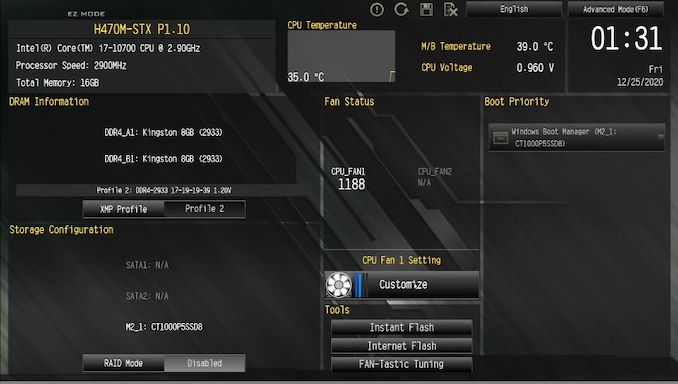






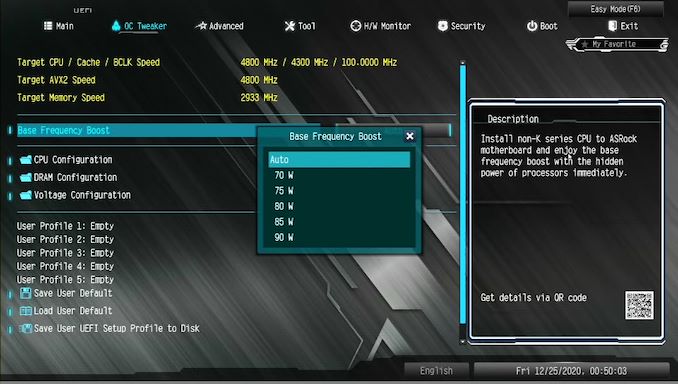
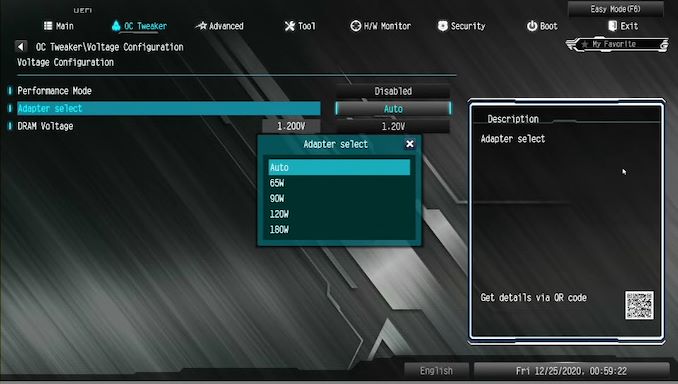
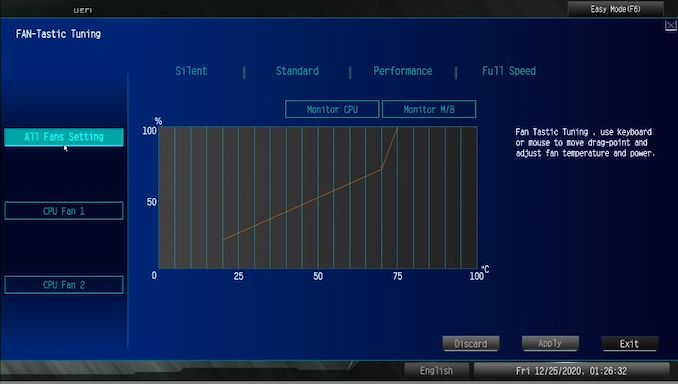
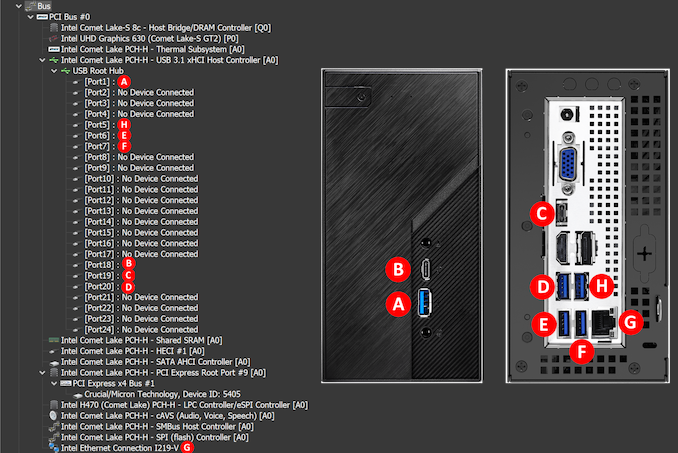








26 Comments
View All Comments
ingwe - Tuesday, December 29, 2020 - link
What a great value! I am impressed.JfromImaginstuff - Tuesday, December 29, 2020 - link
Seems pretty darn goodAdditionalPylons - Tuesday, December 29, 2020 - link
I agree that this is great value. Shame about not including 2.5 GbE though. Ganesh, are you planning to review the AMD counterpart Deskmini X300 as well? (Despite being a bit older it still supports the latest Renoir APUs.) Personally I'm hoping for something like this based on Cezanne APUs to be launched at CES. It is great having socketed CPU in the Deskmini, but I'd also gladly buy a Cezanne-based successor to e.g. Asus PN50, Gigabyte Brix or ASRockInd 4x4box.powerarmour - Tuesday, December 29, 2020 - link
Yep, not surprised it's the 'Intel' variant here...lmcd - Tuesday, December 29, 2020 - link
As a 2400G user, it makes sense why they didn't review it. It's dated.And Ian is the one that has the OEM-only APUs.
ganeshts - Tuesday, December 29, 2020 - link
I have a DeskMini X300 sample that arrived just a few days back along with a Renoir APU. Review should be out sometime in January.AdditionalPylons - Tuesday, December 29, 2020 - link
Great! Looking forward to that! And thanks a lot for this review as well!osteopathic1 - Tuesday, December 29, 2020 - link
How would this compare to a new Mac Mini with M1?At the same price point the mac has less ram/storage but does have an arguably more powerful processor and HDMI 2.0 for 4K at 60Hz.
The internal storage is likely not a factor anyway as most who use this as a HTPC will have external storage of some sort with their media on it.
Any thoughts?
fishingbait15 - Thursday, December 31, 2020 - link
Huh? With the exception of single core performance, the M1 chip isn't "arguably more powerful" than any hexacore or octacore Intel desktop chip. Most media and "tech" sites only compare the M1 to the dual and quad core "mobile" (more accurately laptop) chips that Apple replaced in the MacBook Air and entry level Mac Mini and MacBook Pros. The hexacore and octacore desktop chips are clearly more powerful, and it was that CPU that was used here. And with 16 GB of RAM instead of 8 GB that is in the $699 Mac Mini, the comparison favors this device even more.Further, I do not know if you missed it but this configuration has a pair of 4K displayports at 60Hz as well as a third 4K output at 30Hz and a 4th lower resolution output.
Most people will use this as a HTPC? Speak for yourself. It would work just fine for general purpose computing, and you can get an entry level graphics card to make it suitable for 1080p gaming for under $100. (Meanwhile the ARM CPU will make macOS even worse for gaming than before). The M1 Mac is a great accomplishment, and as a result we will see more ARM-based Windows, ChromeOS and Linux laptops starting maybe in late 2021 when hopefully SOMEONE will come out with a design that includes at least 2 Cortex X1 cores, or failing that more than 4 Cortex A78 cores. But devices like this are precisely why Wintel will continue to have a clear majority of the market.
wpcoe - Tuesday, December 29, 2020 - link
It looks like the motherboard tray is a solid piece of metal closely beneath the M.2 slot. How is the heat dissipation for an M.2 SSD?